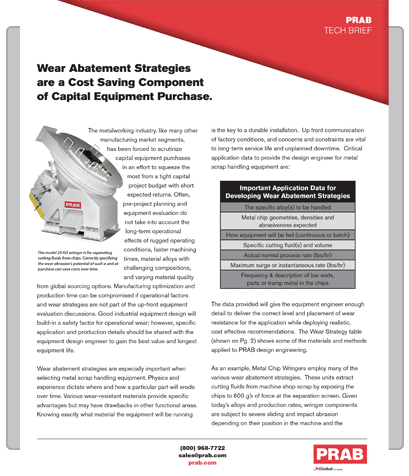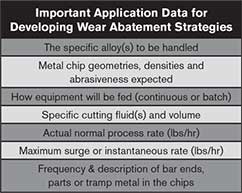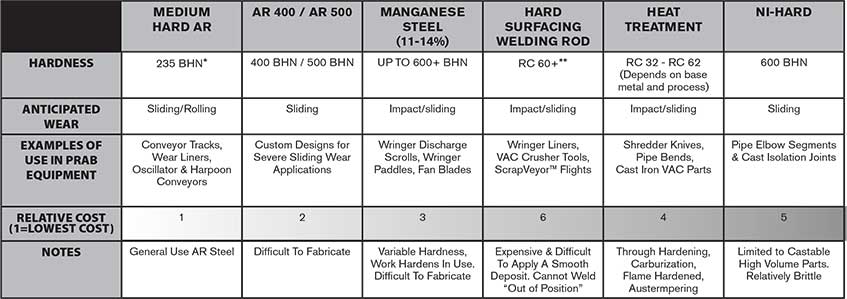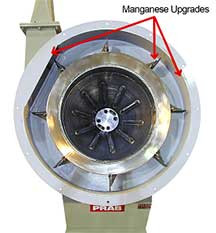
The metalworking industry, like many other manufacturing market segments, has been forced to scrutinize capital equipment purchases in an effort to squeeze the most from a tight capital project budget with short expected returns.
Often, pre-project planning and equipment evaluation do not take into account the long-term operational effects of rugged operating conditions, faster machining times, material alloys with challenging compositions, and varying material quality from global sourcing options. Manufacturing optimization and production time can be compromised if operational factors and wear strategies are not part of the up-front equipment evaluation discussions. Good industrial equipment design will build-in a safety factor for operational wear; however, specific application and production details should be shared with the equipment design engineer to gain the best value and longest equipment life.
Wear abatement strategies are especially important when selecting metal scrap handling equipment. Physics and experience dictate where and how a particular part will erode over time. Various wear-resistant materials provide specific advantages but may have drawbacks in other functional areas. Knowing exactly what material the equipment will be running is the key to a durable installation. Up front communication of factory conditions, and concerns and constraints are vital to long-term service life and unplanned downtime. Critical application data to provide the design engineer for metal scrap handling equipment are:

The data provided will give the equipment engineer enough detail to deliver the correct level and placement of wear resistance for the application while deploying realistic, cost effective recommendations. The Wear Strategy table (shown on Pg. 2) shows some of the materials and methods applied to PRAB design engineering.
As an example, Metal Chip Wringers employ many of the various wear abatement strategies. These units extract cutting fluids from machine shop scrap by exposing the chips to 600 g’s of force at the separation screen. Given today’s alloys and production rates, wringer components are subject to severe sliding and impact abrasion depending on their position in the machine and the characteristics specific to the scrap being processed. To compound the issue, Wringer parts need to be formed, cut, or machined to produce the unit.

*BHN is the Brinell hardness number. **RC is the hardness on the Rockwell ‘C’ scale.
Below are some specific strategies to protect a Chip Wringer in an extreme wear application:

Scrap metal handling equipment requires strategic uses of specialized materials to produce a rugged design. An economic balance between initial cost and durability yields recovery equipment with a low total cost of ownership.
Ignoring durability in today’s high volume, special alloy environment usually means loss of production due to unscheduled downtime or replacement of equipment after a long battle to keep it running. When planning the purchase of metal scrap or cutting fluid separation equipment, take into account an application specific wear abatement plan to be sure the investment is sound. Help is available at the earliest stages of a project to be sure the correct equipment is specified to do the job over time.